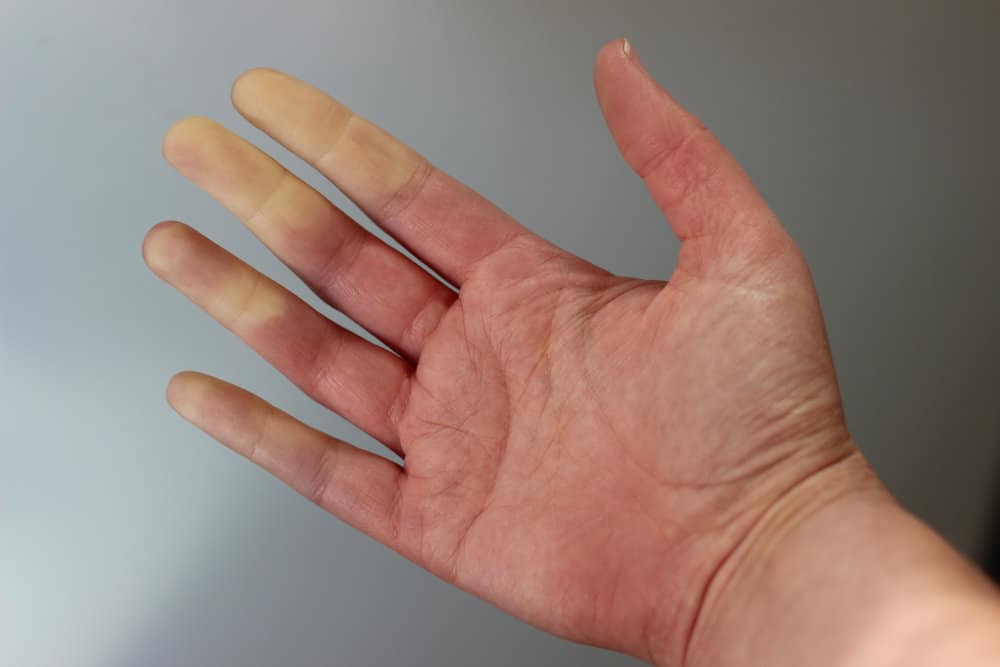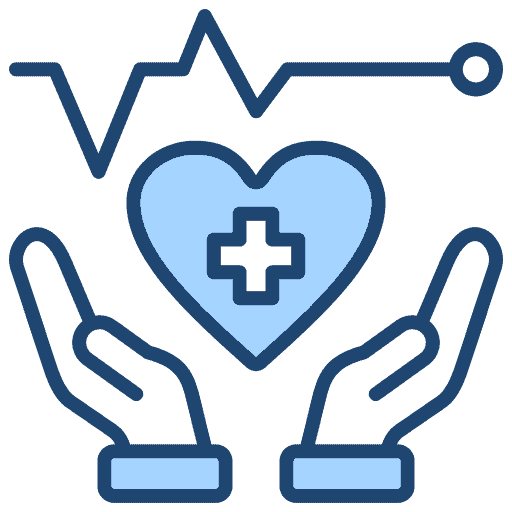
Overview
As the winter season settles upon us, feeling cold is a pretty common occurrence. Blood vessels near the surface of the skin will constrict when exposed to cold in order to push blood deeper in the body and maintain internal temperature.
While some vasoconstriction is normal in response to cold temperatures, some people experience decreased blood flow to areas of the body even in times of stress or feeling emotionally upset. This disease is called Raynaud’s, and most typically affects those who are biologically female, live in colder climates, or have a family history of Reynaud’s Phenomenon.
While some vasoconstriction is normal in response to cold temperatures, some people experience decreased blood flow to areas of the body even in times of stress or feeling emotionally upset. This disease is called Raynaud’s, and most typically affects those who are biologically female, live in colder climates, or have a family history of Reynaud’s Phenomenon.
What is Raynaud's Phenomenon?
While it’s still not completely understood, Raynaud’s causes vasoconstriction in areas like fingers, toes, ears, nose, lips, or nipples in response to cold temperatures (including a situation like opening the freezer door) or in times of emotional turmoil. The area might first turn white, then blue, then feel cold or even numb. As the vasoconstriction relaxes and blood flow returns based on a change in temperature or reduction of stress, the area could swell, tingle, or turn red.
Those who experience Raynaud’s attacks more often or for longer periods may develop painful sores on the fingers due to the lack of oxygen and circulation. These sores can take a long time to heal and are a reason to see a doctor if there has not been a Raynaud’s diagnosis.
Those who experience Raynaud’s attacks more often or for longer periods may develop painful sores on the fingers due to the lack of oxygen and circulation. These sores can take a long time to heal and are a reason to see a doctor if there has not been a Raynaud’s diagnosis.
Causes
There are two types of Raynaud’s: primary and secondary. Primary form is when Raynaud’s occurs on its own with no other associated syndrome or disease. This is the most common form and can be so mild that some people might not even realize they have it. Primary Raynaud’s may also relieve on its own without treatment.
Secondary Raynaud’s is caused by an associated disease and is often more serious. It can occur around age 40 instead of earlier (age 15-30) like primary Raynaud’s. Secondary Raynaud’s can be caused by those with tissue diseases, arterial diseases, carpal tunnel syndrome, smoking, injuries to the hands or feet, those with professions that require repetitive action of the hands or vibrating tools like jackhammers, or medications, such as beta blockers, ADHD medications, or vasoconstriction medications.
Secondary Raynaud’s is caused by an associated disease and is often more serious. It can occur around age 40 instead of earlier (age 15-30) like primary Raynaud’s. Secondary Raynaud’s can be caused by those with tissue diseases, arterial diseases, carpal tunnel syndrome, smoking, injuries to the hands or feet, those with professions that require repetitive action of the hands or vibrating tools like jackhammers, or medications, such as beta blockers, ADHD medications, or vasoconstriction medications.
Diagnosis
A doctor will take a medical history and perform a physical exam as part of the diagnosis process for Raynaud’s. Dermatologists and rheumatologists may assess Raynaud’s with nailfold capillaroscopy, looking at the skin at the base of the fingernail under a microscope to assess the blood vessels. This helps to determine if the disease is primary or secondary Raynaud’s Phenomenon. They may also assess how your skin reacts when exposed to the cold.
More lab work will be ordered if it’s suspected to be secondary Raynaud’s, but there is no one blood test to diagnose the disease.
More lab work will be ordered if it’s suspected to be secondary Raynaud’s, but there is no one blood test to diagnose the disease.
Treatment
There is no cure for Raynaud’s Phenomenon. Treatment is based on the severity of the disease and managing symptoms by avoiding cold exposure, using certain medications (such as vasodilators or calcium channel blockers to help relax the blood vessels), and treating any underlying disorder causing the disease.
For severe Raynaud’s, nerve surgery can be performed to reduce the exaggerated blood vessel response in the hands. A doctor may also recommend injecting anesthetics or Botox to the affected area.
Lifestyle changes, such as quitting smoking, may also be recommended. For those who experience Raynaud’s symptoms as a result of stress, managing stress can help reduce attacks. Exercising, which helps improve circulation, may also reduce the frequency of symptoms.
While experiencing an attack, it’s recommended to go to a warmer area, wiggle fingers and toes or make windmills with your arms, run warm water over the affected area, or try massaging the area to increase circulation.
For severe Raynaud’s, nerve surgery can be performed to reduce the exaggerated blood vessel response in the hands. A doctor may also recommend injecting anesthetics or Botox to the affected area.
Lifestyle changes, such as quitting smoking, may also be recommended. For those who experience Raynaud’s symptoms as a result of stress, managing stress can help reduce attacks. Exercising, which helps improve circulation, may also reduce the frequency of symptoms.
While experiencing an attack, it’s recommended to go to a warmer area, wiggle fingers and toes or make windmills with your arms, run warm water over the affected area, or try massaging the area to increase circulation.
Sources and More Information
Cleveland Clinic, “Raynaud’s Syndrome” https://my.clevelandclinic.org/health/diseases/9849-raynauds-phenomenon
Johns Hopkins Medicine, “Raynaud’s Phenomenon” https://www.hopkinsmedicine.org/health/conditions-and-diseases/raynauds-phenomenon
Mayo Clinic, “Raynaud’s Disease” https://www.mayoclinic.org/diseases-conditions/raynauds-disease/diagnosis-treatment/drc-20363572
National Library of Medicine: Medline Plus, “Raynaud’s Disease” https://medlineplus.gov/raynaudsdisease.html
Wigely, Frederick. Up to Date. “Clinical manifestations and diagnosis of Raynaud’s Phenomenon” https://www.uptodate.com/contents/clinical-manifestations-and-diagnosis-of-raynaud-phenomenon?search=raynauds%20disease&source=search_result&selectedTitle=1~150&usage_type=default&display_rank=1
Johns Hopkins Medicine, “Raynaud’s Phenomenon” https://www.hopkinsmedicine.org/health/conditions-and-diseases/raynauds-phenomenon
Mayo Clinic, “Raynaud’s Disease” https://www.mayoclinic.org/diseases-conditions/raynauds-disease/diagnosis-treatment/drc-20363572
National Library of Medicine: Medline Plus, “Raynaud’s Disease” https://medlineplus.gov/raynaudsdisease.html
Wigely, Frederick. Up to Date. “Clinical manifestations and diagnosis of Raynaud’s Phenomenon” https://www.uptodate.com/contents/clinical-manifestations-and-diagnosis-of-raynaud-phenomenon?search=raynauds%20disease&source=search_result&selectedTitle=1~150&usage_type=default&display_rank=1


